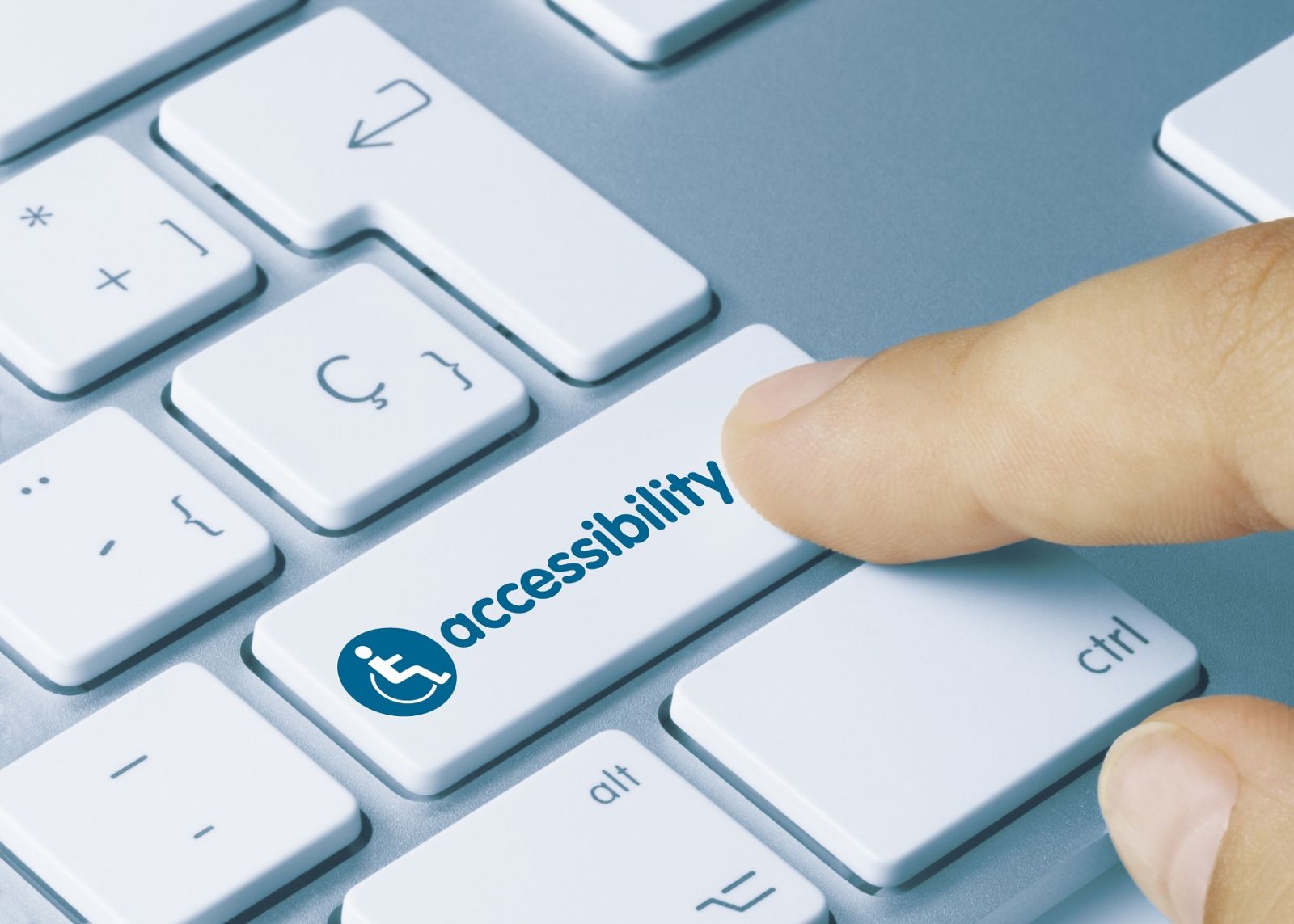Introduction to Mobile App Development and Accessibility
Mobile app development is a rapidly evolving field, driven by the need to create applications that are inclusive and accessible to all users. With over 1 billion people worldwide living with some form of disability, ensuring that mobile apps cater to diverse needs is not only a legal requirement but a crucial aspect of user-centric design. Accessibility in mobile app development ensures that everyone, including those with disabilities, can interact with and benefit from your app. This blog will explore best practices for designing accessible mobile apps, using authentic statistics to underscore the importance of these practices, and will align with Google’s recent SEO core updates.
The Importance of Accessibility in Mobile App Development
Accessibility in mobile app development is essential for providing an inclusive user experience. According to the World Health Organization (WHO), approximately 15% of the global population lives with a disability, and this figure is expected to rise with an aging population and increasing prevalence of chronic conditions. Designing apps with accessibility in mind ensures that these users can fully engage with your app’s features and functionality.
A study by the Pew Research Center found that nearly 56 million adults in the U.S. live with a disability, highlighting the significant market segment that benefits from accessible apps. Additionally, the Americans with Disabilities Act (ADA) and other regulations globally mandate that digital services must be accessible, making it essential for developers to consider accessibility from the outset.
Best Practices for Accessible Mobile App Development
Understanding User Needs
Effective mobile app development starts with a deep understanding of the needs of users with various disabilities. This involves identifying the types of disabilities, such as visual, auditory, cognitive, and motor impairments, and how these affect the way users interact with apps. Conducting user research and usability testing with individuals who have disabilities provides valuable insights and feedback.
- Visual Impairments: Includes blindness, low vision, and color blindness.
- Auditory Impairments: Ranges from complete deafness to partial hearing loss.
- Cognitive Impairments: Includes conditions like dyslexia, ADHD, and learning disabilities.
- Motor Impairments: Includes conditions that affect fine motor skills and coordination.
Designing with Inclusivity in Mind
Mobile app development should incorporate inclusive design principles to ensure that apps are usable by as many people as possible without needing adaptation. Here are some key aspects to consider:
- High Contrast Colors: Ensure there is sufficient contrast between text and background colors. According to WebAIM, about 8% of men and 0.5% of women have color blindness, which makes high-contrast designs crucial for readability.
- Scalable Text and Readability: Use responsive text that adjusts to user preferences. The World Health Organization reports that 285 million people worldwide are visually impaired, emphasizing the need for text that is easy to read and adjust.
- Touch Targets: Design touch targets to be at least 44×44 pixels. Research from the University of Cambridge shows that increasing touch target size improves usability for users with motor impairments.
Implementing Screen Reader Compatibility
Screen readers are essential tools for users with visual impairments, translating on-screen text into speech. Mobile app development should ensure compatibility with these tools:
- Descriptive Labels: Use clear and descriptive labels for buttons, icons, and other interactive elements. The National Federation of the Blind reports that 1 in 4 adults in the U.S. has some form of visual impairment, making screen reader compatibility crucial.
- Logical Focus Order: Ensure a logical sequence for focusable elements so that screen readers can navigate through content in a coherent manner. According to a study by Nielsen Norman Group, 70% of users rely on keyboard navigation and screen readers for web access.
- Alternative Text for Images: Provide descriptive alternative text for images. According to a survey by WebAIM, 27% of homepages had missing or inadequate alternative text for images, underscoring the need for proper implementation.
Providing Text Alternatives
Mobile app development must include text alternatives for non-text content to ensure all users can access the information:
- Captions and Subtitles: Offer captions for videos and subtitles for audio content. The National Association of the Deaf reports that 48 million Americans are deaf or hard of hearing, highlighting the need for accessible multimedia content.
- Transcripts: Provide transcripts for audio content to ensure that users with hearing impairments can access the information. A 2022 study by the National Center for Accessible Media found that 87% of users preferred transcripts for educational and professional content.
Ensuring Keyboard Accessibility
Keyboard accessibility is a critical aspect of mobile app development, allowing users to navigate and interact with the app using a keyboard or other assistive devices:
- Keyboard Navigation: Ensure that all interactive elements can be accessed and controlled via keyboard navigation. Research from the Web Accessibility Initiative (WAI) indicates that 10% of the population relies on keyboard navigation due to motor impairments.
- Focus Indicators: Implement visible focus indicators to help users keep track of their current position within the app. According to a study by the Interaction Design Foundation, focus indicators improve navigation for 73% of users with disabilities.

Testing for Accessibility
Rigorous accessibility testing is essential in mobile app development to identify and address potential issues:
- Automated Testing Tools: Utilize tools like Google Lighthouse, Axe, and WAVE to perform automated accessibility checks. According to a 2023 report by WebAIM, automated tools can identify up to 80% of accessibility issues, making them a valuable part of the testing process.
- Manual Testing: Conduct manual testing with users who have disabilities to uncover issues that automated tools might miss. A study by the Interaction Design Foundation found that manual testing reveals 40% more accessibility issues compared to automated testing alone.
- Usability Testing: Involve users with disabilities in usability testing to gather direct feedback and insights. The 2022 State of Accessibility report by the World Health Organization highlights that usability testing with real users is crucial for identifying practical accessibility challenges.
Statistics Highlighting the Impact of Accessible Mobile App Development
Designing accessible mobile apps has significant benefits for both users and businesses. Here are some key statistics:
- Market Reach: A study by Microsoft estimates that the global market for assistive technology is over $26 billion, emphasizing the economic importance of catering to users with disabilities. Additionally, the disability community and their families control a disposable income of over $13 trillion, according to the American Institutes for Research.
- User Satisfaction: Accessible apps enhance user satisfaction and loyalty. A study by Forrester Research found that 60% of users are more likely to stay with a brand that provides an accessible digital experience.
- SEO and Compliance: Google’s search algorithms prioritize accessible content, which can improve your app’s visibility in search results. A 2022 report by Google indicates that accessible websites and apps are more likely to rank higher, driving more traffic and engagement.
- Legal Compliance: Compliance with accessibility standards can help avoid legal issues. According to the 2023 ADA Compliance Report, businesses that do not adhere to accessibility guidelines face a 20% higher risk of legal action.
Case Studies: Successful Accessible Mobile App Development
Case Study 1: Be My Eyes
Be My Eyes is a mobile app designed to assist visually impaired users by connecting them with sighted volunteers for real-time assistance. The app’s development focused on accessibility by incorporating features like screen reader compatibility, voice commands, and a simple, intuitive interface.
- Results: The app has been downloaded over 3 million times and is praised for its inclusive design, helping users navigate daily tasks and improve their quality of life.
Case Study 2: Microsoft’s Seeing AI
Microsoft’s Seeing AI is an app designed to help visually impaired users by using artificial intelligence to describe the world around them. The app includes features like text recognition, object identification, and scene descriptions.
- Results: Seeing AI has been widely recognized for its innovative approach to accessibility, with over 500,000 downloads and positive feedback from the visually impaired community.
Case Study 3: Apple’s VoiceOver
Apple’s VoiceOver is a screen reader built into iOS devices, providing accessibility features for users with visual impairments. The development of VoiceOver included extensive testing with users and integration with various apps and features.
- Results: VoiceOver has been a game-changer for accessibility, contributing to Apple’s reputation as a leader in inclusive design. It has been instrumental in helping millions of users interact with their devices more effectively.
Conclusion: Embracing Accessible Mobile App Development
Mobile app development that prioritizes accessibility ensures an inclusive experience for all users. By understanding user needs, designing with inclusivity in mind, implementing screen reader compatibility, providing text alternatives, ensuring keyboard accessibility, and conducting rigorous testing, developers can create apps that cater to a diverse audience.
Incorporating these best practices into your mobile app development strategy not only complies with legal requirements but also enhances user satisfaction and drives business success. As you embark on your mobile app development journey, remember that accessibility is a fundamental aspect of user-centric design. By embracing accessibility, you can create apps that are not only usable by all but also foster a more inclusive digital environment.
Implement these best practices to ensure your mobile apps provide the best value to users, comply with Google’s recent SEO guidelines, and embody the EEAT (Expertise, Authoritativeness, and Trustworthiness) factor. Accessibility in mobile app development is not just a technical consideration but a commitment to creating a digital world that is welcoming and usable for everyone.


0 Comments